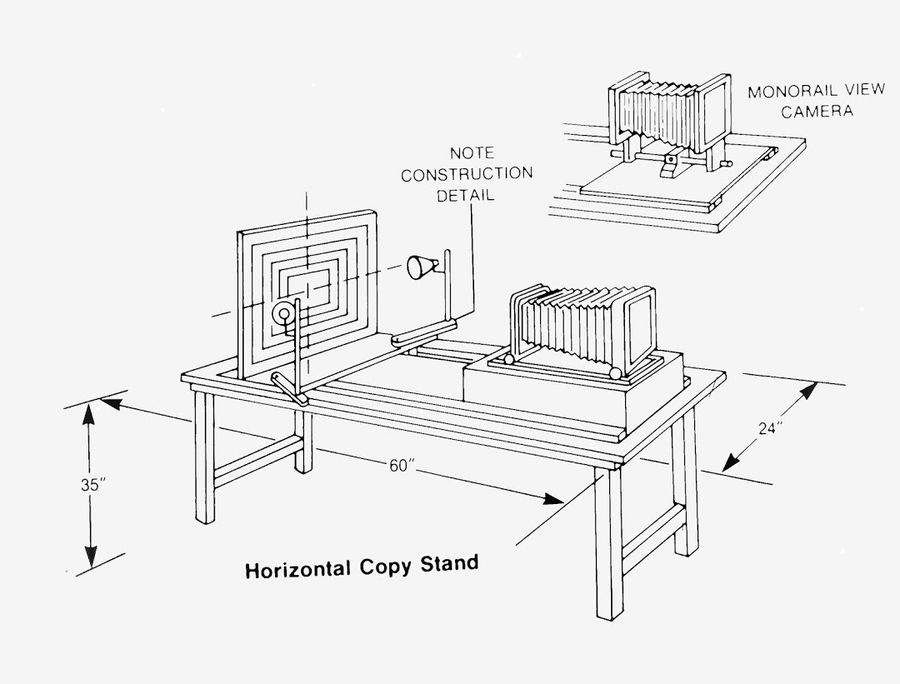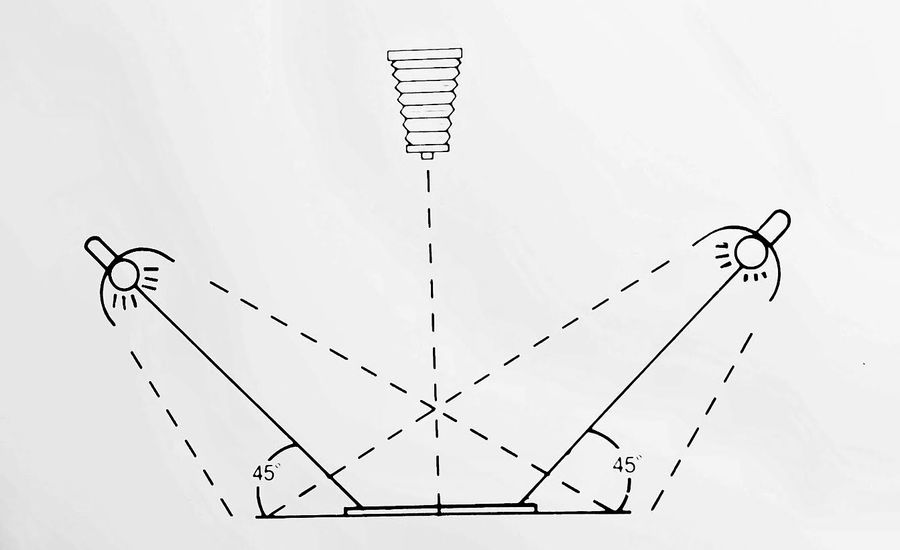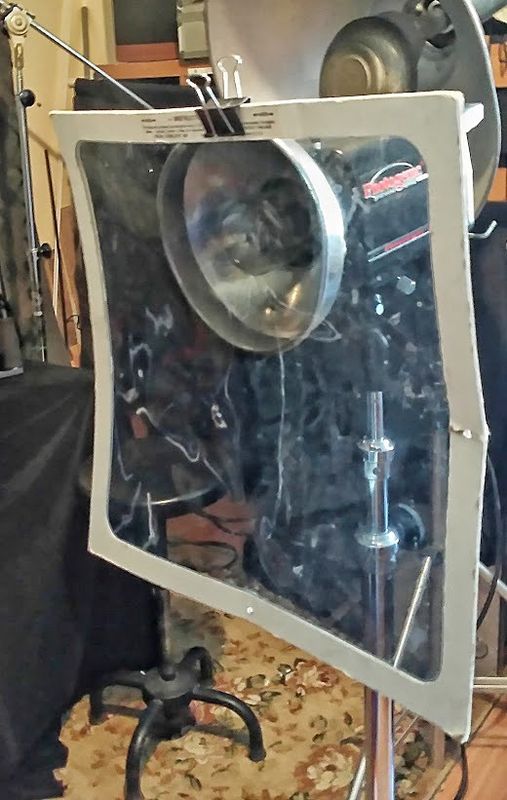Best Lens for Photographing Documents?
Aug 22, 2021 16:31:08 #
I have offered to assist in a legal research project, photographing documents (envelopes). The only requirement that I am aware of is that the address is legible.
I have several lenses for my Nikon D7500. My all-around go-to lens is a 18-140mm 3.5-5.6 zoom, and my brief tests suggest I can get a legible image from about six inches away from the subject. I also have a 35mm 1.8 prime lens and an 18-55mm 3.5-5.6 zoom.
What I don't know is what the lighting will be like. I'm inclined to use the prime lens, as it's faster in low-light situations. But the 18-55mm should provide more flexibility if I'm not able to get close enough to the subject.
Has anyone done work like this before? I should also note that it's unlikely I can set up a tripod, flash and other gear, so my offer is to give a step up from using a phone camera.
Hints? Ideas?
I have several lenses for my Nikon D7500. My all-around go-to lens is a 18-140mm 3.5-5.6 zoom, and my brief tests suggest I can get a legible image from about six inches away from the subject. I also have a 35mm 1.8 prime lens and an 18-55mm 3.5-5.6 zoom.
What I don't know is what the lighting will be like. I'm inclined to use the prime lens, as it's faster in low-light situations. But the 18-55mm should provide more flexibility if I'm not able to get close enough to the subject.
Has anyone done work like this before? I should also note that it's unlikely I can set up a tripod, flash and other gear, so my offer is to give a step up from using a phone camera.
Hints? Ideas?
Aug 22, 2021 16:46:41 #
You can probably use your 18-140, I find mine to be sharp, or your 35 1.8. If there will be electricity, bring a couple of cheap LED clamp lights and an extension. If you can't use a tripod, what comes to mind is to steal a trick from the old Minox spy camera. Make a knotted cord with knots representing distances that attaches to an eye bolt in the camera tripod mount. Simply place the knot on the work surface and you are distance consistent.
Aug 22, 2021 16:49:50 #
Just Fred wrote:
I have offered to assist in a legal research proje... (show quote)
“Best lens” ?!? “Legible” ?!? Nuffsedd.
Phone works great. No step up needed.
If you can’t get out of this, just use the 18-55 if it has VR. I know the 35 does NOT have VR cuz thaz why I didn’t buy one myself.
Lens speed is meaningless. Just use whatever ISO it takes. The address will be “Legible” at any ISO the camera can conjure up.
Picture Style (or whatever Nikon calls it) is waaaaay more important than lenses. If there’s a style called “Document” you are in luck. Otherwise run some tests. You don’t want white whites. You want “Legible”, not snappy or attractive. You want data, not art.
Never work without back up. A decent phone is adequate back up.
Aug 22, 2021 17:02:50 #
I do this type of work (flat work) all the time with documents, coins, paintings, photographs and books. My key considerations are keeping the lens centered and parallel to the work. I also make sure the lens is far enough above the work to avoid any barrel or pincushion effect in the image. By mounting the camera I can keep the ISO very low to minimize noise.
If I have a number of items I will use a tripod or my converted darkroom copy stand. I also use two large softboxes set at 45 degree angles and far enough to the side to make sure they are not reflected in the work. Of course you want to make sure your color fidelity is controlled so I will do a custom white balance using a grey card to set it. This may be important if you are operating in a room with extraneous mixed light like tungsten or fluorescent bulbs that differ in temperature from your photo lights. My lights are continuous as I like to see how it will look before I snap the shutter, which, by the way, is often done with a remote to help eliminate any shake.
This can also be done hand held but you will need to be a lot more steady than I, but this will only be important if very fine details in the text is needed, like in a forensic analysis of a typeface in a questioned document. If you take some of the suggestions above, you can use just about any lens you wish. For me my general lens is a Canon 24-105. For single items like stamps, coins or jewelry I will use my 100mm macro.
Good luck with yur project. Let me know if any of this helps.
If I have a number of items I will use a tripod or my converted darkroom copy stand. I also use two large softboxes set at 45 degree angles and far enough to the side to make sure they are not reflected in the work. Of course you want to make sure your color fidelity is controlled so I will do a custom white balance using a grey card to set it. This may be important if you are operating in a room with extraneous mixed light like tungsten or fluorescent bulbs that differ in temperature from your photo lights. My lights are continuous as I like to see how it will look before I snap the shutter, which, by the way, is often done with a remote to help eliminate any shake.
This can also be done hand held but you will need to be a lot more steady than I, but this will only be important if very fine details in the text is needed, like in a forensic analysis of a typeface in a questioned document. If you take some of the suggestions above, you can use just about any lens you wish. For me my general lens is a Canon 24-105. For single items like stamps, coins or jewelry I will use my 100mm macro.
Good luck with yur project. Let me know if any of this helps.
Aug 22, 2021 17:04:41 #
User ID wrote:
Phone works great. No step up needed.
Phone, plus a mini tripod or similar setup to stabilize the phone better and minimize camera shake. If you have a lot of documents to photograph, you don't want to go back and re-shoot again and again.
Aug 22, 2021 17:08:30 #
Just Fred wrote:
I have offered to assist in a legal research proje... (show quote)
Documents, maps etc are one thing, just the addresses on the envelopes is a much easier thing.
The addresses can be done with any lens that will focus close enough to get the address large enough and clear enough to read. Though a macro/micro lens would be best.
For documents, maps, old photo prints you need a flat field lens to avoid distortion - macro/micro lens are flat field. (the ones that go to 1:1, not the close up lenses the OEMs often label "macro")
I have known some people who do document photography to use an old enlarger lens modified to mount on their camera and then they mount the whole thing on an old enlarger frame and often use a laptop to tether the camera so they can see what they are doing in large detail. They do make special gear for photographing documents, photo prints and maps that are too large and/or fragile to run through a flatbed scanner*.
I took over the Senior Center Photo Club from a lady who got too busy with volunteer work at the city library - she is digitalizing all their old newspapers, magazines etc. She uses their old microfilm rig, macro lenses on cameras, scanners etc. and often for the old faded and yellowed paper has to run them through photo editing software to make them readable.
*for something like envelopes just using a flatbed scanner and then doing a quick crop and tweak in post processing software will do it.
Aug 22, 2021 17:11:34 #
Just Fred wrote:
I have offered to assist in a legal research proje... (show quote)
A scanner with an optically flat cover glass, preferably with a light matte finish, or a non-reflective glass from framing store . A scanner is way better than any lens and no hassle.
You're on your own as far as the flat glass is concerned. But the key is to ensure that the flatbed of the scanner is larger than the material being scanned. I helped scan thousands of paper documents for a corporate entity and this is what we used. We had a scanning room wtih 6 large format high-speed flatbed scanners. They may have been 24x36 since many of the documents were architectural drawings, and I can't tell you who the manufacturer was. But they were fast and accurate, once you set them up.
If you go the camera route - the best solution is an 80mm to 135mm enlarger lens mounted in a bellows and attached to your camera. Otherwise a macro lens, 50mm to 100mm, primarily because they are least likely to have CA and distortion, and will have a flatter field than a fast prime at max aperture, which are pretty awful the corners and edges until you stop them down to at least F5.6. However with no ability to set up a tripod and lighting it's pretty much a moot point.
https://gcn.com/articles/2020/05/28/digitizing-historic-documents.aspx
Aug 22, 2021 17:40:38 #
It’s amazing the level of gear Hoglanders would throw at a dirt simple dumbassed snapshot job.
Quixdraw mentioned the old Minox “spy” camera (from the 1930s). It was toadally crude and shot on 8mm film strips but it did the job. My twelve year old phone is huuuuuuuugely superior to a Minox.
The legal research team all have phones. They just suckered you into this cuz they have better, less tedious, stuff to do than recording addresses.
Do you care about the research project ? Then shoulder the load. If you just like to play photographer, find another sand box.
Quixdraw mentioned the old Minox “spy” camera (from the 1930s). It was toadally crude and shot on 8mm film strips but it did the job. My twelve year old phone is huuuuuuuugely superior to a Minox.
The legal research team all have phones. They just suckered you into this cuz they have better, less tedious, stuff to do than recording addresses.
Do you care about the research project ? Then shoulder the load. If you just like to play photographer, find another sand box.
Aug 22, 2021 19:20:59 #
Just Fred wrote:
I have offered to assist in a legal research proje... (show quote)
A 50mm macro or prime would be nice
 ......
.......
Aug 22, 2021 19:35:33 #
If all you need to do is get a legible image of the address and you don't have to consider other details on the envelopes such as the paper texture, postmarks, stamps, or other historical or artifactual features, there is a simple method. Scanning is easy and simple. You do not need to worry about lighting and the detail should be sufficient and view on your computer screen and/or printed.
If you insist on using your camera, a normal lens that can focus in close enough or a macro lens should do the job. I prefer a 100mm focal length.
Lighting is easy. You can make a simple copy setup with two photoflood lamps in simple parabolic (12" reflectors( , LEDs or electronic flash units each at 45 degrees to a copy board. Evenly light the board.
Sometimes old papers become burnished and shinney or are clay-coated and glossy, to begin with. A polarizing filter will accommodate that. If you want to maximize results as to contrast and to mitigate as much glare as possible, place some polarizing sheets over the lights.
You may have to spend a few bucks on the polarizing sheets but if the research fols are serious, they should foot the bill.
Of course, you can get away with other methods. This is the prescribed method by museums, archives and even police forensic labs for shooting documents, printed matter and old letters and envelopes.
Images of faded ink can be somewhat recovered by inferred photography.
Most modern lenses do not have copious levels of barrel distortion that would seriously affect such a project- as you exp[lain it.
Keep the camera parallel to the copy board and you should not experience any linear or perspective distortion.
For extremely sharp and precise copy work of line copy, there is a special process and flat-field lenses bet they are not required for simple documentation.
You do not have to build the copy stand as shown in the diagram. For a temporary setup, just improvise the lighting positions. If you have lots of copies to shoot, once you standardize exposure, the job shod proceed efficiently.
If you insist on using your camera, a normal lens that can focus in close enough or a macro lens should do the job. I prefer a 100mm focal length.
Lighting is easy. You can make a simple copy setup with two photoflood lamps in simple parabolic (12" reflectors( , LEDs or electronic flash units each at 45 degrees to a copy board. Evenly light the board.
Sometimes old papers become burnished and shinney or are clay-coated and glossy, to begin with. A polarizing filter will accommodate that. If you want to maximize results as to contrast and to mitigate as much glare as possible, place some polarizing sheets over the lights.
You may have to spend a few bucks on the polarizing sheets but if the research fols are serious, they should foot the bill.
Of course, you can get away with other methods. This is the prescribed method by museums, archives and even police forensic labs for shooting documents, printed matter and old letters and envelopes.
Images of faded ink can be somewhat recovered by inferred photography.
Most modern lenses do not have copious levels of barrel distortion that would seriously affect such a project- as you exp[lain it.
Keep the camera parallel to the copy board and you should not experience any linear or perspective distortion.
For extremely sharp and precise copy work of line copy, there is a special process and flat-field lenses bet they are not required for simple documentation.
You do not have to build the copy stand as shown in the diagram. For a temporary setup, just improvise the lighting positions. If you have lots of copies to shoot, once you standardize exposure, the job shod proceed efficiently.



Aug 23, 2021 04:04:57 #
Aug 23, 2021 06:14:56 #
Just Fred wrote:
I have offered to assist in a legal research proje... (show quote)
For flat thin items, a high dpi color scanner is hard to beat.
Aug 23, 2021 06:48:21 #
billnikon
Loc: Pennsylvania/Ohio/Florida/Maui/Oregon/Vermont
Just Fred wrote:
I have offered to assist in a legal research proje... (show quote)
My go do document lens was the Nikon 60mm D 2.8 macro lens. All Macro lens are designed to photograph flat, and since your document is flat, it makes a perfect match.
The only thing to be aware of is that the D lens will not auto focus with the new Z camera's.
You can get a good copy off ebay at a good price.
https://www.ebay.com/sch/i.html?_from=R40&_trksid=p2380057.m570.l1311&_nkw=nikon+af+micro-nikkor+60mm+f%2F2.8d+lens&_sacat=0
Aug 23, 2021 06:50:30 #
I used my 18-55 for many such projects with good success. The 35 prime should do fine as well, if there is not a lot of variation in distances.
Aug 23, 2021 07:44:55 #
Thanks everyone for your replies. Not surprisingly, thread creep occurred fairly early on. Not once did I mention having or using a scanner, so those who mentioned it, thanks for playing, but no. And, unsurprisingly also, I received recommendations to use each of the lenses I did mention (I wonder, if I'd included my 10-24mm 3.5-4.5 wide angle zoom would someone have recommended that as well?).
Returning to my original question: I am comfortable with any of the lenses. What is unknown are the conditions (light, space, angle, etc.) and the number of documents. I should add too, that I and one or two of my fellows are doing this in an office, possibly in a store room. We don't plan on being there long, just long enough to photograph the envelopes.
Returning to my original question: I am comfortable with any of the lenses. What is unknown are the conditions (light, space, angle, etc.) and the number of documents. I should add too, that I and one or two of my fellows are doing this in an office, possibly in a store room. We don't plan on being there long, just long enough to photograph the envelopes.
If you want to reply, then register here. Registration is free and your account is created instantly, so you can post right away.





